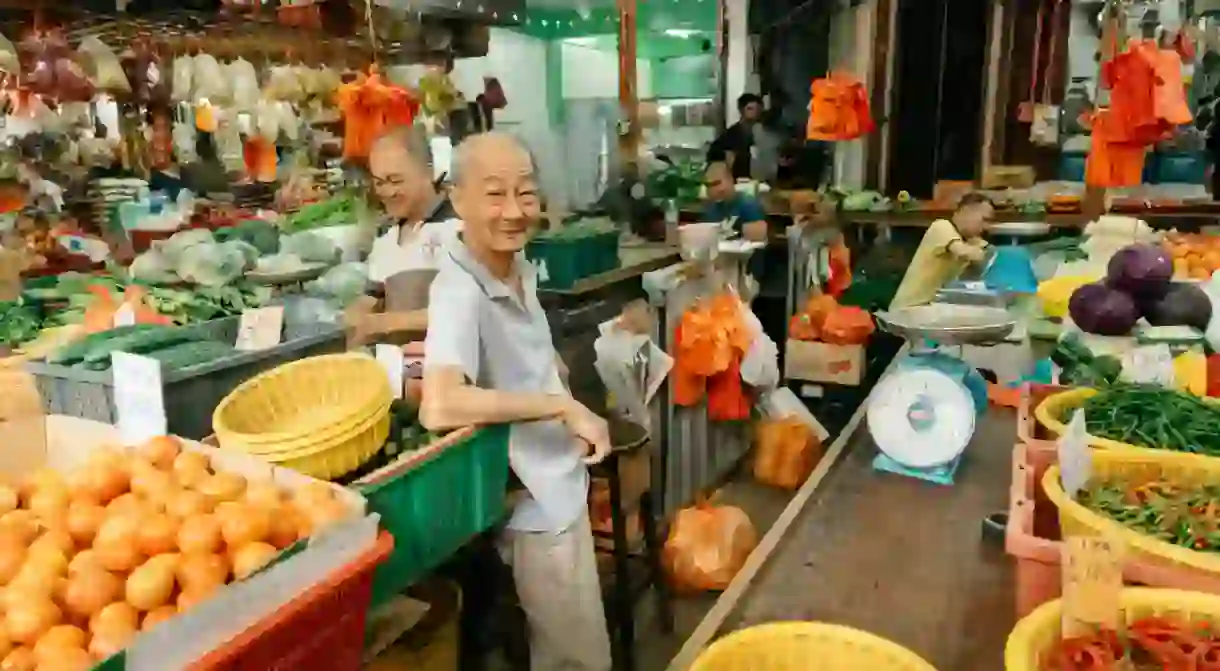A Traveller's Guide To Chow Kit Market, Kuala Lumpur

As cities develop, the new and modern replace the old and decrepit. Traditional markets in Malaysia and other parts of Asia are disappearing at the expense of high-rise blocks and shopping complexes. Chow Kit Market is one of very few that have survived the test of time in Malaysia’s capital.
Chow Kit Market
Chow Kit holds many titles, with some more favourable than others. Named after the former tin miner and public figure, Loke Chow Kit, and sandwiched between the two parallel roads of Jalan Raja Laut and Jalan Tuanku Abdul Rahman, Chow Kit Market thrives. Inside a residential area with large Malay and Indonesian communities, the market has provided a lifeline for local families for decades.


The famous
Chow Kit Market is Malaysia’s largest wet market. Seemingly hundreds of stalls filled with meat, fresh fruit and freshly caught fish line the narrow passageway. As Kuala Lumpur saw rapid development over the last 20 years or so, the market has survived the test of time. But only by the skin of its teeth. A few years ago, Chow Kit Market was fortunate to avoid demolition to make way for yet another one of the multi-storey’s so prevalent in Kuala Lumpur today.





The infamous
But Chow Kit Market has an infamous side too. Towards the other side, away from the market and vendors lies a labyrinth of small side streets. This seedy area is Kuala Lumpur’s unofficial red light district. Locals warn about the dangers of walking around after dark due to the number of drug addicts, prostitution and gangsters.
Where is Chow Kit Market?
Located on the northern end of Jalan Tunku Abdul Rahman, approximately 2.5 kilometres (1.6 miles) from KLCC and Petronas Towers, Chow Kit Market is accessible within 30 minutes from most hotels and attractions. The Monorail passing through KLCC and KL Sentral goes to Chow Kit. From the station, the market is just a few hundred metres down the road. Or, outside of rush hour, Uber and Grab can get passengers here within no time at all for a few ringgits. Chow Kit Market opens at 6:00am until 5:00pm; most people spend approximately one hour.


Shopping at Chow Kit Market
Chow Kit Market divides into two sections: the wet and dry market. The wet market, known locally as Bazaar Baru Chow Kit, bursts with local families and restaurant owners from early in the morning to buy their fresh produce. Walk through the stalls and see everything from hanging meat carcasses to fish spending their last minutes in a pail of water next to the stall. The market isn’t for the faint-hearted. Vendors butcher their meat in their stalls, and the smell can be overwhelming. But at the same time, endless varieties of tropical fruit from the red spiky rambutan to pineapples, longans and bananas fill the stalls at rock bottom prices. The dry market, at the other end, features a more tourist-friendly setting selling clothes, shoes, DVDs and textiles among many others.





Practical information
Tourists sometimes feel overwhelmed when they explore Chow Kit Market. From the overpowering smells, pushy vendors, crowdedness, noise and less than hygienic conditions, this personifies the true spirit of an Asian marketplace. But embrace the environment and glimpse into the real way of life for many locals. Those who persevere and walk through the bustling market will find the freshest fruit and several opportunities for that photograph that captures the very soul of Kuala Lumpur.






















